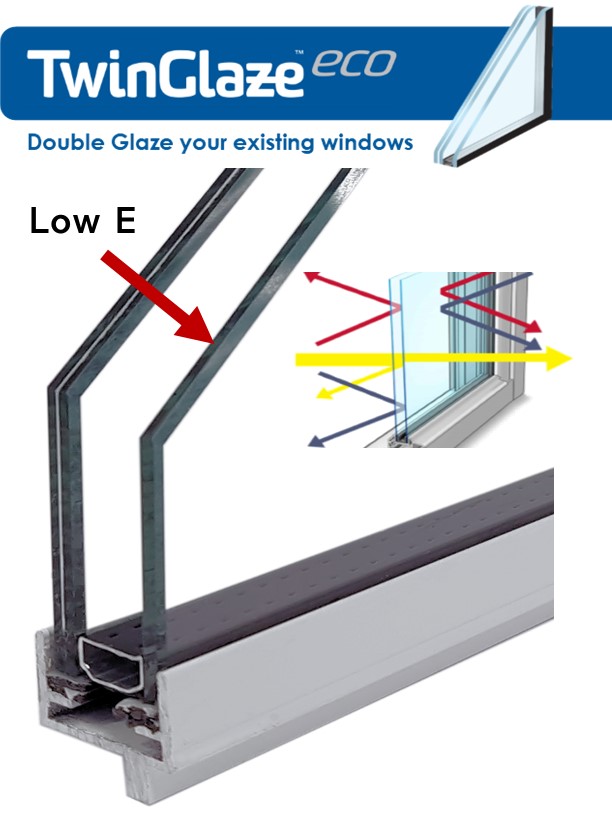All Categories
Featured
Table of Contents
Double Glazing Perth in Armadale Western Australia
That window can transfer more solar heat in winter than in summertime. A west-facing window on a summertime's afternoon has an angle of incidence from near 0 approximately 30 with a big reliable location of solar radiation. A north-facing window, in summertime, has a high angle of occurrence and a low reliable area of solar radiation, so can transmit less heat than a west-facing one.

However you can quickly and easily enhance the thermal efficiency of your house by replacing your windows. This is one of the most efficient approaches of restoration to attain enhanced thermal convenience. There are countless types of glass and frames to pick from. Selecting the right ones is essential to improving the energy efficiency of your home.
What Is Double Glazing Windows And Doors? in Nedlands Perth
There are several kinds of glass products to select from. Single glazing uses a single pane of glass. Single glazing with clear glass is not really efficient when it comes to heat loss or gain. To improve performance, you can utilize single glazing with a more energy-efficient type of glass such as low emissivity (low-e) glass.
Several layers can be put together with sealed cavities in between each sheet of glass. IGUs typically provide much better energy efficiency than single glazing, because they transmit less energy. Nevertheless, the energy performance of IGUs also depends upon: the homes of each layer of glass. Different glass types (for instance, clear and low-e glass) can be assembled in an IGU.
What Are The Best Double Glazed Windows In Australia? in South Perth Western Australia
IGU cavities can be filled with air or a more inert, low-conductivity gas such as argon the width of the cavity. Wider cavities supply lower (better) U values, with 12mm usually accepted as the preferred space how well the cavity is sealed.
If argon is installed to the cavity in place of air, moisture is dependably excluded the level of desiccant (drying agent). The spacer (metal or polymer strip) that separates the glass layers contains a desiccant to soak up any moisture. Inadequate desiccant may trigger wetness to condense on the glass surface area in cold conditions, lowering thermal efficiency.
How Are Double Glazed Windows More Energy Efficient? in Huntingdale Perth
In reality, IGUs can deliver much better energy performance for all climates, specifically in heated and air-conditioned houses. Cross-section information of single, double and triple-glazing units Low emissivity glass (commonly called low-e glass) reduces heat transfer. Low-e glass might be either high or low transmission: High transmission low-e glass has a covering that allows daylight from the sun to enter your house to achieve good solar heat gain, but reduces the amount of the long wavelength infrared heat that can escape back through the window.
Low-e glass has either a pyrolytic covering or a vacuum-deposited thin movie metal coating. Pyrolytic finishings are resilient and can be utilized for any glazing; vacuum-deposited coverings are soft and are just utilized within IGUs. Low-e finishings can considerably enhance both U worth and SHGC; nevertheless, they should be used correctly or they will either deteriorate or stop working to perform as required.
Which Is The Best Type Of Double Glazing? - Which? - Which.co.uk in Joondalup WA
Low-e finishings can be used in combination with clear, toned or reflective glass. Low-e coverings on glazing can lower heat transfer where needed Photo: Department of Industry, Science, Energy and Resources Toned glass has actually colouring additives included during manufacture. It is offered in different colours, usually bronze, grey, blue and green.
Table of Contents
Latest Posts
The Surprising Benefits Of Double Glazing In The Summer ... in Dalkeith Western Australia
Why Install Stunning Double Glazing Windows During Summer? in Glendalough WA
Double Glazing Windows in Osborne Park Perth
More
Latest Posts
The Surprising Benefits Of Double Glazing In The Summer ... in Dalkeith Western Australia
Why Install Stunning Double Glazing Windows During Summer? in Glendalough WA
Double Glazing Windows in Osborne Park Perth